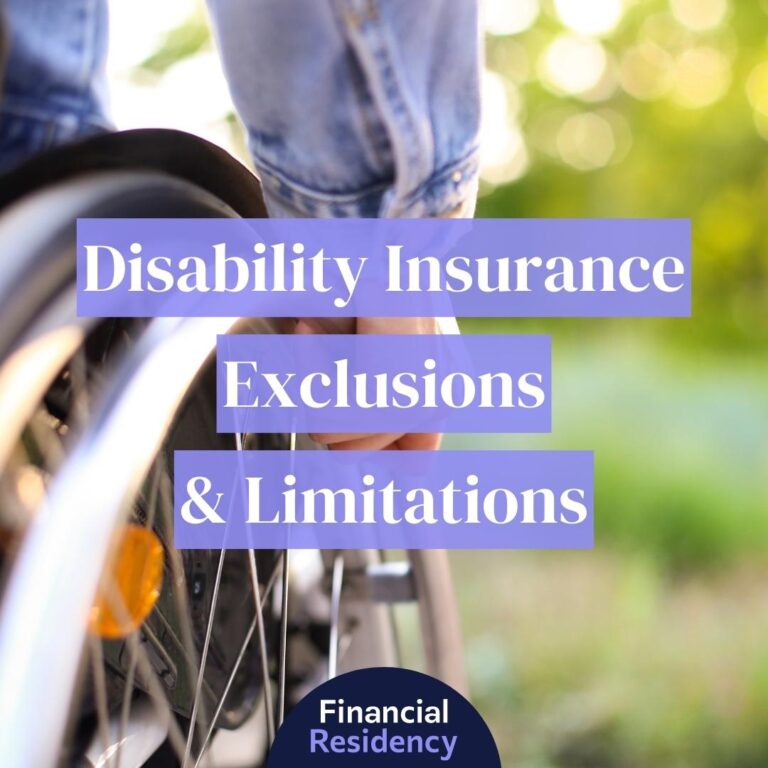Disability insurance is often overlooked, but it can protect your income in case you become disabled because of injury or illness. It is most commonly divided into two sub-categories: short-term vs long-term disability insurance.
Understanding the difference between short-term and long-term disability insurance can help you decide which aligns best with your needs.
Read on to learn more about the key features, eligibility requirements, coverages, and benefits of long-term and short-term disability insurance.
What is Disability Insurance?
Disability insurance is a type of insurance policy that protects your ability to earn a paycheck in the event that you become disabled due to an accident or illness.
Disability insurance isn’t meant to be used if you’re out of work for a week or so with a stomach bug. Instead, it’s meant to act as a safety net if you’re put in a situation where your income is legitimately at stake for an extended period of time.
For example, disability income insurance can help if you are in a car accident that puts you out of work or need to recover from intensive surgery. In instances like this, you need financial protection so that you can focus on healing and feeling like your best self again.
Types of Disability Insurance Coverage
There are two different types of coverage when it comes to disability insurance: short-term disability insurance and long-term disability insurance.
Short-Term Disability Insurance
Short-term disability insurance covers disability claims for a short period of time, typically a few weeks or months. Short-term policies are typically best for people who have no existing disabilities but are still at risk of experiencing a medical emergency, such as a last-minute surgery or an accident that requires hospitalization and rehabilitation.
Long-Term Disability Insurance
Long-term disability insurance, on the other hand, is designed for people who anticipate taking advantage of disability benefits for longer amounts of time, months, or even years. These policies are most often held by people who have existing medical conditions, such as physical handicaps or mental health conditions.
Long-Term vs. Short-Term Disability Insurance
The main difference between long-term and short-term disability insurance is the amount of time an insured will receive coverage benefits.
| Features | Short-Term Disability Insurance | Long-Term Disability Insurance |
| Elimination Period | 7-30 days; 14 days is typical with most policies | 90 days is typical with most policies; insured can opt for longer elimination period to lower premiums |
| Benefit Amount | 40-70% of lost wages | 60-80% of lost wages |
| Benefit Duration | 3, 6, or 12 months | 2, 5, or 10 years; can be lifelong for some policies |
There may also be differences in the elimination period lengths and percentage of income replacement, but this will vary depending on the insurer and the individual. We’ll dive deeper into the differences between the two types of disability insurance below.
Short-Term Disability Insurance
Coverage Scope
Short-term disability coverage provides income replacement for a limited period in cases of temporary illness or injury. Your policy can cover a wide range of disabilities, including accidents, illnesses, surgeries, and even maternity-related conditions.
While short-term disability coverage is often compared to workers’ compensation, there are some key differences in the application of the coverage. Workers’ compensation coverage protects your income if an injury or illness occurs as a result of work-related activities. Short-term disability coverage protects your income in case you are indisposed for any temporary illness or injury.
Eligibility Requirements
Generally, insurance companies will require that an individual have steady employment to qualify for short-term disability coverage. Most people acquire short-term disability coverage through their employer, which makes it easy for providers to verify employment status.
Additionally, an insurance company may require a health screening to ascertain any pre-existing health conditions prior to issuing coverage. You may have to undergo a medical exam or health questionnaire before your coverage begins.
Benefit Duration
As the name suggests, short-term disability insurance will cover a percentage of your pre-disability income for a limited time. Most policies offer coverage with a maximum benefit duration of 26 weeks, but the exact benefit period and elimination period, or the time you must wait before coverage kicks in, will depend on your specific short-term disability policy.
Waiting Period
An elimination period is the time you need to wait from the start of the disability until your disability benefits begin. Short-term disability benefits have a shorter waiting period than long-term disability policies.
Policyholders typically wait anywhere from a few days to a few weeks before they can access their benefits. Until then, you may have to rely on other resources, such as sick leave or savings, to cover your expenses.
Long-Term Disability Insurance
Coverage Scope
Long-term disability coverage is available for people with many different disabilities. This usually includes chronic and long-term conditions, such as chronic illnesses, severe injuries, mental health conditions, and permanent disabilities.
People with chronic disabilities may have both short-term and long-term disability policies in place. If an insured experiences a period of disability leave, they often rely on short-term insurance benefits until the coverage period expires. Once the benefits have lapsed, the long-term disability insurance coverage will kick in.
It’s important to note that, while someone may have two disability insurance policies, the policies will likely not be able to provide benefits for overlapping periods.
Eligibility Requirements
Eligibility requirements for long-term disability insurance policies tend to be more strict than for short-term insurance plans. Short-term disability benefits are available if an employee cannot perform their job due to a disability. Long-term insurance plans are available if an employee cannot do any job because of their disability.
Because of this critical distinction, long-term disability insurance may require more extensive medical evaluations. An insured may have to provide medical proof of a qualifying condition or illness to qualify for benefits. Qualifying conditions may include cancer treatments, debilitating injury or disease, or chronic mental illness.
Like short-term disability insurance, long-term disability coverage is typically only available to employed individuals. Most insurance companies offer policies through employers, but you can also go directly to the company and provide proof of employment.
Benefit Duration
As the name suggests, long-term disability insurance provides benefits for an extended period of time. This can range from a few years all the way up to retirement age. The length of your benefit period will depend on your individual policy and circumstances. Check with your insurance company to learn more about their specific long-term disability plans.
Waiting Period
Long-term disability benefits typically have longer waiting periods than short-term disability benefits. It can range from a few weeks to several months, depending on your policy. During this time, you will need to rely on other means to support yourself financially. Many people will exhaust their short-term disability benefits during this time to help tide them over until their long-term benefits kick in.
Benefits of Short vs. Long-Term Disability Insurance
When deciding between long-term and short-term disability insurance, it’s important to weigh the benefits to see what’s best for you. Here are some key considerations to help point you in the right direction.
Benefits of Short-Term Disability Insurance
- Avoid financial stress: Short-term disability insurance provides income replacement in case you find yourself unable to work for a period of time. This can help relieve any financial stress, such as paying bills or buying the necessities, while you rest and recover.
- Provide peace of mind: Whether or not you have a pre-existing disability, many of us experience an injury or health-related emergency that may require additional recovery time. Short-term disability insurance gives you the peace of mind to prioritize recovery instead of worrying about how to make ends meet.
- Cost-effective income replacement: Short-term disability insurance policies are much more cost effective compared to long-term policies. If you’re looking for an affordable stop gap, short-term disability insurance is an excellent income replacement solution.
Benefits of Long-Term Disability Insurance
- Supplement Social Security: Social Security disability insurance provides benefits to you or certain family members if you have worked long enough and have paid Social Security taxes. Long-term disability insurance can act as a replacement for Social Security benefits in case your situation falls under exclusions.
- Allow for rehabilitation: The pressure to return to work after a period of disability can hinder your recovery process. Long-term disability insurance can give you the freedom to fully rest and recover before you jump back into work.
- Protect long-term savings: If you don’t have income replacement plans in place, your long-term savings and assets may be at risk if you suffer a long-term illness or injury. Long-term disability insurance provides protection so you don’t need to drain your savings to make ends meet.
Which Type of Disability Coverage is Best for You?
While both long-term and short-term disability insurance protect your finances during a disability, they differ in their coverage, benefits duration, waiting periods, and more.
Determining whether you need long- or short-term disability coverage will require you to assess your health circumstances, risk factors, and financial preparedness. Ultimately, you will need to have a comprehensive understanding of what your needs are in case you undergo a period of disability leave.
Consider consulting an insurance professional to help you determine which coverage you need based on your specific needs. The right disability insurance policy can help you ensure that your income and financial well-being are protected in case of unforeseen circumstances.
Learn more:



